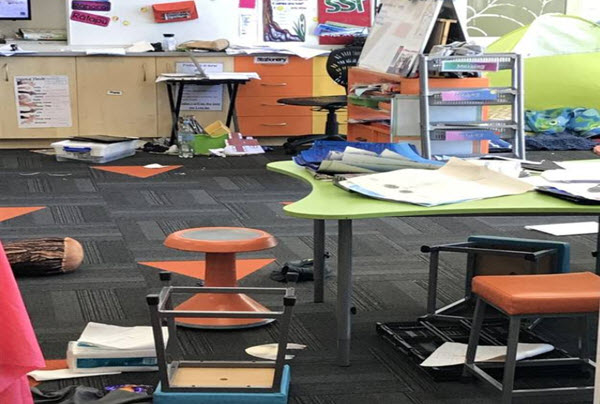Physical Restraint Rules Place All Children At Risk
 Ministry of Education data gained under the Official Information Act show that almost 6,000 reports of physical restraint have had to be lodged by schools since new rules were introduced for schools in August 2017. 71% of the incidences occurred in primary schools with children 10 years old and under. 82% of the incidences involved boys. This also means that 30,000 forms or reports will have had to be completed by school staff.
Ministry of Education data gained under the Official Information Act show that almost 6,000 reports of physical restraint have had to be lodged by schools since new rules were introduced for schools in August 2017. 71% of the incidences occurred in primary schools with children 10 years old and under. 82% of the incidences involved boys. This also means that 30,000 forms or reports will have had to be completed by school staff.
Ministry Guidelines argue that “physical restraint is a serious intervention” and that the “emotional and physical impact on the student being restrained” can be significant. They say that school staff should not use physical restraint in a number of situations including:
- to respond to behaviour that is disrupting the classroom but not putting anyone in danger of being hurt
- for refusal to comply with an adult’s request
- to stop a student who is trying to leave the classroom or school without permission
- to stop a student who is damaging or removing property, unless there is a risk to safety.
They also say that “if escalation occurs, move further away”.
For any acts of physical restraint on a student, five forms must be completed – an incident report, information for the Ministry, staff reflection form, debriefing form with the Principal, and a debriefing with the parents.
New Zealand Principals’ Federation (NZPF) president Whetu Cormick said the guidelines for restraining a student need urgent attention. “It is ridiculous that we cannot restrain a child who is trashing a classroom or principal’s office. The Crimes Act [which the anti-smacking law comes under] and the Education Act are at odds on this issue and schools need this mess sorted quickly.”
The comments came after a number of disturbing cases, including two primary school teachers censured for pushing or pulling young children. The Tai Tokerau Principals Association said the cases should never have been heard by the tribunal, and the Principals Federation called for a review of the rules governing physical restraint.
It seems ironic that as we are saying no to violence within families and our community, schools are expected to tolerate an unacceptable level of violence and unruly behaviour, and school staff are wasting hours of valuable time having to complete documentation on the physical restraint of disruptive and unruly students in primary schools.
Teachers are right to be concerned about the potential harms and hassles of handling unruly and violent students and the possible effect on their professional status. Common sense has been expelled from schools, and no amount of ‘guidelines’ and ‘professional development courses’ can make up for teachers being able to respond quickly and instinctively in the most effective way in often very stressful and exceptional circumstances. Parents also want assurance that their children will be kept safe from violent or unruly students.
The government is now attempting to ‘fix’ the guidelines. New rules in the Education and Training Bill 2019 clarify that physical force can be used, as a last resort, to keep students safe from harm.
Common sense should be the priority, with more trust being placed in the professionalism of our educators to act in the best interests of all students in difficult circumstances.






